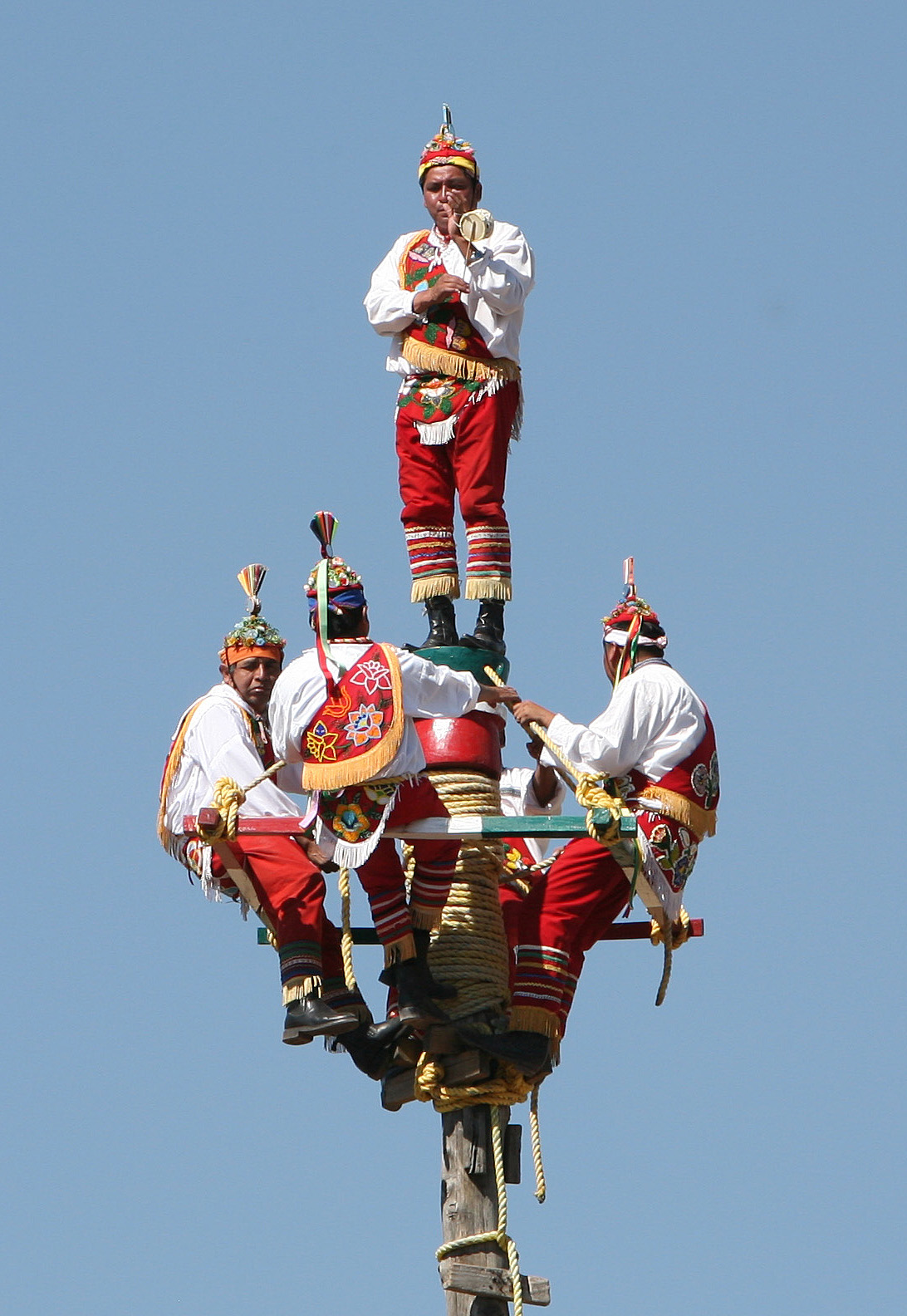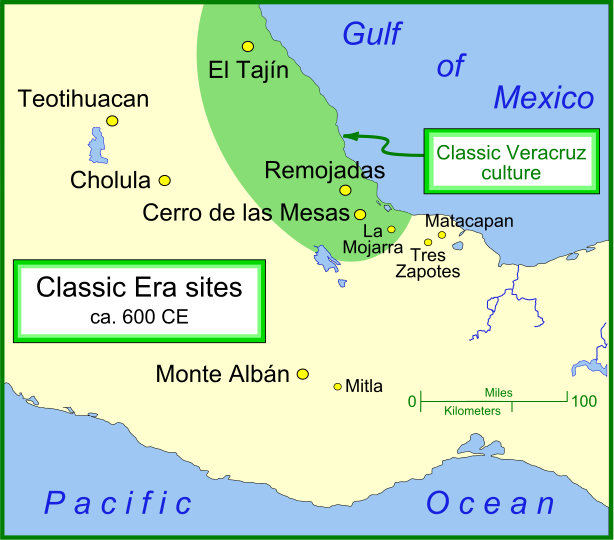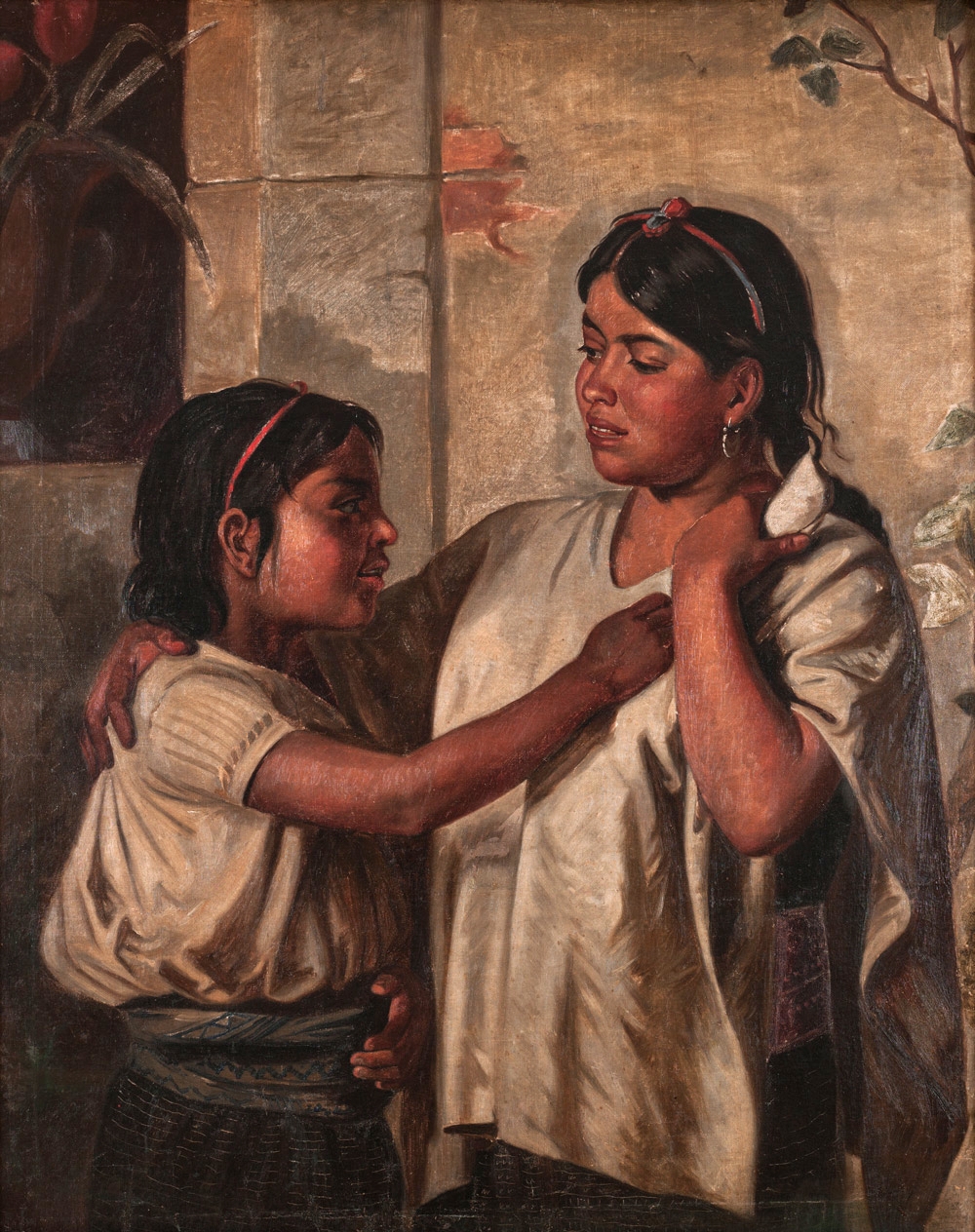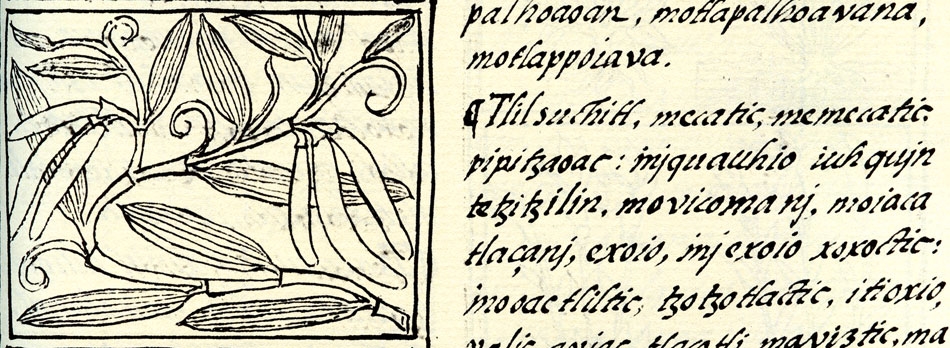|
Totonac
The Totonac are an Indigenous people of Mexico who reside in the states of Veracruz, Puebla, and Hidalgo. They are one of the possible builders of the pre-Columbian city of El Tajín, and further maintained quarters in Teotihuacán (a city which they claim to have built). Until the mid-19th century they were the world's main producers of vanilla. The Totonac people cultivated vanilla in Papantla, but faced with competition when the French island of Réunion entered the market. This group of people also encountered conflicts over land ownership during the course of the 19th and early 20th centuries, as the privatization of communal land in Papantla became more of a concern to local elites. Etymology The term "totonac" refers to the people living in Totonacapan. There is no agreement as to the origin of the term. Some authors have translated the term "totonac" as a Nahuatl word meaning "People of Hot Land". The translation for this word in the Totonac Language, according ... [...More Info...] [...Related Items...] OR: [Wikipedia] [Google] [Baidu] |
Totonac Languages
Totonac is a Totonacan language cluster of Mexico, spoken across a number of central Mexican states by the Totonac people. It is a Mesoamerican language and shows many of the traits which define the Mesoamerican Linguistic Area. Along with some 62 other indigenous languages, it is recognised as an official language of Mexico, though as a single language. History The Totonac people are an indigenous group native to Totonacapan along the Gulf of Mexico. The Gulf of Mexico stretches from the Texan border to the Yucatán Peninsula. It includes the greatest topographic diversity in the country and contains a great variety of ecozones as well as microhabitats. The Totonac people share their territory with the Nahua, Otomí, and Tepehua (not to be confused with the Tepehuano language), all of which have communities within the region. Totonacapan is located in east central Mexico between present day Puebla and Veracruz. The people of Totonac have migrated to various cities suc ... [...More Info...] [...Related Items...] OR: [Wikipedia] [Google] [Baidu] |
Totonacapan
Totonacapan refers to the historical extension where the Totonac people of Mexico dominated, as well as to a region in the modern states of Veracruz and Puebla. The historical territory was much larger than the currently named region, extending from the Cazones River in the north to the Papaloapan River in the south and then west from the Gulf of Mexico into what is now the Sierra Norte de Puebla region and into parts of Hidalgo. When the Spanish arrived, the Totonac ethnicity dominated this large region, although they themselves were dominated by the Aztec Empire. For this reason, they allied with Hernán Cortés against Tenochtitlán. However, over the colonial period, the Totonac population and territory shrank, especially after 1750 when mestizos began infiltrating Totonacapan, taking political and economic power. This continued into the 19th and 20th centuries, prompting the division of most of historical Totonacpan between the states of Puebla and Veracruz. Today, the term r ... [...More Info...] [...Related Items...] OR: [Wikipedia] [Google] [Baidu] |
Papantla
Papantla () is a city and municipality located in the north of the Mexican state of Veracruz, in the Sierra Papanteca range and on the Gulf of Mexico. The city was founded in the 13th century by the Totonacs and has dominated the Totonacapan region of the state since then. The region is famed for vanilla, which occurs naturally in this region, the Danza de los Voladores and the El Tajín archeological site, which was named a World Heritage Site. Papantla still has strong communities of Totonacs who maintain the culture and language. The city contains a number of large scale murals and sculptures done by native artist Teodoro Cano García, which honor the Totonac culture. The name Papantla is from Nahuatl and most often interpreted to mean "place of the papanes" (a species of crow). This meaning is reflected in the municipality's coat of arms. History The area in which Papantla is found has been dominated by a number of pre-Hispanic cultures. The first known is that of the ... [...More Info...] [...Related Items...] OR: [Wikipedia] [Google] [Baidu] |
Veracruz
Veracruz, formally Veracruz de Ignacio de la Llave, officially the Free and Sovereign State of Veracruz de Ignacio de la Llave, is one of the 31 states which, along with Mexico City, comprise the 32 Political divisions of Mexico, Federal Entities of Mexico. Located in eastern Mexico, Veracruz is bordered by seven states, which are Tamaulipas, San Luis Potosí, Hidalgo (state), Hidalgo, Puebla, Oaxaca, Chiapas, and Tabasco. Veracruz is divided into Municipalities of Veracruz, 212 municipalities, and its capital city is Xalapa, Xalapa-Enríquez. Veracruz has a significant share of the coastline of the Gulf of Mexico on the east of the state. The state is noted for its mixed ethnic and indigenous populations. Cuisine of Veracruz, Its cuisine reflects the many cultural influences that have come through the state because of the importance of the port of Veracruz (city), Veracruz. In addition to the capital city, the state's largest cities include Veracruz, Coatzacoalcos, Córdoba, V ... [...More Info...] [...Related Items...] OR: [Wikipedia] [Google] [Baidu] |
Danza De Los Voladores
The ''Danza de los Voladores'' (; "Dance of the Flyers"), or ''Palo Volador'' (; "flying pole"), is an ancient Mesoamerican ceremony/ritual still performed today, albeit in modified form, in isolated pockets in Mexico. It is believed to have originated with the Nahua peoples, Nahua, Huastec people, Huastec and Otomi people, Otomi peoples in central Mexico, and then spread throughout most of Mesoamerica. The ritual consists of dance and the climbing of a pole from which four of the five participants then launch themselves tied with ropes to descend to the ground. The fifth remains on top of the pole, dancing and playing a flute and drum. According to one myth, the ritual was created to ask the gods to end a severe drought. Although the ritual did not originate with the Totonac people, today it is strongly associated with them, especially those in and around Papantla in the Mexican state of Veracruz. The ceremony was named an Intangible cultural heritage by UNESCO in order to ... [...More Info...] [...Related Items...] OR: [Wikipedia] [Google] [Baidu] |
Cempoala
Cempoala or Zempoala (Nahuatl ''Cēmpoalātl'' 'Place of Twenty Waters') is an important Mesoamerican archaeological site located in the municipality of Úrsulo Galván in the Mexican state of Veracruz. The site was inhabited mainly by Totonacs, Chinantecas and Zapotecs. It was one of the most important Totonac settlements during the postclassical Mesoamerican period and the capital of the kingdom of Totonacapan. It is located one kilometer from the shore of the Actopan River and six kilometres from the coast. Cempoala was the first urban settlement the Spaniards saw upon arrival on the American continent. According to some sources, the city was founded at least 1,500 years before the Spanish arrival, and there is evidence of Olmec influence. Although not much is known about the Preclassical and Classic Era, the Preclassical town was built on mounds to protect it from floods. The Totonacs moved into the area during the Toltec Empire peak, having been forced out of thei ... [...More Info...] [...Related Items...] OR: [Wikipedia] [Google] [Baidu] |
El Tajín
El Tajín is a pre-Columbian archeological site in southern Mexico and is one of the largest and most important cities of the Classic era of Mesoamerica. A part of the Classic Veracruz culture, El Tajín flourished from 600 to 1200 AD and during this time numerous temples, palaces, ballcourts, and pyramids were built. From the time the city fell, in 1230, to 1785, no European seems to have known of its existence, until a government inspector chanced upon the Pyramid of the Niches. El Tajín, named after the Totonac rain god, was named a World Heritage site in 1992, due to its cultural importance and its architecture. This architecture includes the use of decorative niches and cement in forms unknown in the rest of Mesoamerica. Its best-known monument is the Pyramid of the Niches, but other important monuments include the Arroyo Group, the North and South Ballcourts and the palaces of Tajín Chico. In total there have been 20 ballcourts discovered at this site, (the last 3 bei ... [...More Info...] [...Related Items...] OR: [Wikipedia] [Google] [Baidu] |
Teotihuacán
Teotihuacan (; Spanish: ''Teotihuacán'', ; ) is an ancient Mesoamerican city located in a sub-valley of the Valley of Mexico, which is located in the State of Mexico, northeast of modern-day Mexico City. Teotihuacan is known today as the site of many of the most architecturally significant Mesoamerican pyramids built in the pre-Columbian Americas, namely the Pyramid of the Sun and the Pyramid of the Moon. Although close to Mexico City, Teotihuacan was not a Mexica (i.e. Aztec) city, and it predates the Aztec Empire by many centuries. At its zenith, perhaps in the first half of the first millennium (1 CE to 500 CE), Teotihuacan was the largest city in the Americas, with a population of at least 25,000, but has been estimated at 125,000 or more, making it at least the sixth-largest city in the world during its epoch. The city covered and 80 to 90 percent of the total population of the valley resided in Teotihuacan. Apart from the pyramids, Teotihuacan is also ... [...More Info...] [...Related Items...] OR: [Wikipedia] [Google] [Baidu] |
Indigenous People Of Mexico
Indigenous peoples of Mexico (), Native Mexicans () or Mexican Native Americans (), are those who are part of communities that trace their roots back to populations and communities that existed in what is now Mexico before the arrival of Europeans. The number of Indigenous Mexicans is defined through the second article of the Mexican Constitution. The Mexican census does not classify individuals by race, using the cultural-ethnicity of Indigenous communities that preserve their Indigenous languages, traditions, beliefs, and cultures. As a result, the count of Indigenous peoples in Mexico does not include those of mixed Indigenous and European heritage who have not preserved their Indigenous cultural practices. Genetic studies have found that most Mexicans are of partial Indigenous heritage. According to the National Indigenous Institute (INI) and the National Institute of Indigenous Peoples (CDI), in 2012 the Indigenous population was approximately 15 million people, divided ... [...More Info...] [...Related Items...] OR: [Wikipedia] [Google] [Baidu] |
Pre-Columbian
In the history of the Americas, the pre-Columbian era, also known as the pre-contact era, or as the pre-Cabraline era specifically in Brazil, spans from the initial peopling of the Americas in the Upper Paleolithic to the onset of European colonization of the Americas, European colonization, which began with Christopher Columbus's voyage in 1492. This era encompasses the history of Indigenous peoples of the Americas, Indigenous cultures prior to significant European influence, which in some cases did not occur until decades or even centuries after Columbus's arrival. During the pre-Columbian era, many civilizations developed permanent settlements, cities, agricultural practices, civic and monumental architecture, major Earthworks (archaeology), earthworks, and Complex society, complex societal hierarchies. Some of these civilizations had declined by the time of the establishment of the first permanent European colonies, around the late 16th to early 17th centuries, and are know ... [...More Info...] [...Related Items...] OR: [Wikipedia] [Google] [Baidu] |
Vanilla
Vanilla is a spice derived from orchids of the genus ''Vanilla (genus), Vanilla'', primarily obtained from pods of the flat-leaved vanilla (''Vanilla planifolia, V. planifolia''). ''Vanilla'' is not Autogamy, autogamous, so pollination is required to make the plants produce the fruit from which the vanilla spice is obtained. In 1837, Belgian botanist Charles François Antoine Morren discovered this fact and pioneered a method of artificially pollinating the plant. The method proved financially unworkable and was not deployed commercially. In 1841, Edmond Albius, a 12-year-old slave who lived on the French island of Réunion in the Indian Ocean, discovered that the plant could be hand-pollination, hand-pollinated. Hand-pollination allowed global cultivation of the plant. Noted French botanist and plant collector Jean Michel Claude Richard falsely claimed to have discovered the technique three or four years earlier. By the end of the 20th century, Albius was considered the ... [...More Info...] [...Related Items...] OR: [Wikipedia] [Google] [Baidu] |
Puebla
Puebla, officially the Free and Sovereign State of Puebla, is one of the 31 states that, along with Mexico City, comprise the Federal Entities of Mexico. It is divided into 217 municipalities and its capital is Puebla City. Part of east-central Mexico, it is bordered by the states of Veracruz to the north and east, Hidalgo, México, Tlaxcala and Morelos to the west, and Guerrero and Oaxaca to the south. The origins of the state lie in the city of Puebla, which was founded by the Spanish in this valley in 1531 to secure the trade route between Mexico City and the port of Veracruz. By the end of the 18th century, the area had become a colonial province with its own governor, which would become the State of Puebla, after the Mexican War of Independence in the early 19th century. Since that time the area, especially around the capital city, has continued to grow economically, mostly through industry, despite being the scene of a number of battles, the most notable of which bei ... [...More Info...] [...Related Items...] OR: [Wikipedia] [Google] [Baidu] |









